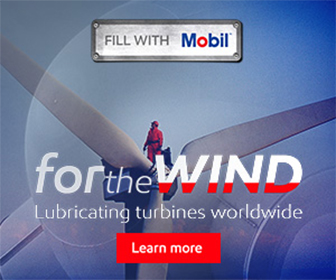Wind Energy Operators and Insurers Warned on Losses Ahead of Repowering
Green Partners Adjusting (GPA), the specialist renewable energy loss adjusting firm, has highlighted a significant challenge for project owners and insurers managing losses on wind energy projects approaching repowering.
As the first wave of UK and European wind farms, built in the late 1990s and early 2000s, reach the end of their operational life or the full term of their planning agreements, many projects are earmarked for repowering with larger, more efficient turbines. The difficulty lies in how policies respond when a site is scheduled for repowering but suffers a material damage event before that transition. Traditional insurance wordings do not always anticipate this scenario, leaving both insureds and insurers navigating complex grey areas.
“Replacing turbines like-for-like is often not viable,” explained George Pooley, Managing Partner, Green Partners Adjusting. “Original turbines in the 750 – 850kW range are largely obsolete and uneconomical to repair if there is not a supply of replacement parts - meaning project owners naturally look to repower with 2MW or larger machines. But current insurance policy structures create uncertainty about how losses should be quantified in this scenario.”
The difficulty centres on the treatment of replacement cost, actual cash value (ACV), and loss of revenue:
- Obsolescence: Replacing or attempting repairs with the same model is impractical; however, taking the ACV can leave insureds with negligible recovery, as depreciation wipes out much of the turbine’s book value.
- Revenue uncertainty: Policies may cover loss of revenue for a repair or replacement period, but if the insured chooses not to replace, entitlement to business interruption cover for the length of period indemnifiable, becomes unclear.
- Disputed positions: Insurers may argue there is no entitlement to revenue if the asset is not replaced, while insureds will push for the full indemnity period - often up to 12 months. Loss adjustors are then tasked with bridging the gap between both parties.
Green Partners Adjusting believes the market would benefit from the development of standardised clauses that address the unique circumstances of end-of-life and repowering projects. Policies that, for example, could specify loss of revenue cover for a notional repair period (6–9 months) even if the turbine is not replaced, providing a fairer balance between insurers and insureds.
Some policies include “Obsolete Technology” provisions, but these tend to focus on the availability of spare parts or the economics of repairing older units and often lack clarity on Business Interruption treatment. Green Partners Adjusting argues that the market needs standardised clauses tailored to repowering scenarios. These could, for example, stipulate:
- Clear definitions of ACV recovery for end-of-life assets using a pre agreed valuation formula or linking to the Sum Insured.
- Explicit Business Interruption cover for a defined notional repair period, regardless of whether replacement occurs.
- Mechanisms for agreed settlement where repowering is imminent.
“With repowering becoming a central feature of the wind sector, this issue will only grow in importance,” said George Pooley. “Our role as loss adjustors is to guide constructive conversations, but the industry also needs clarity. Clearer policy language would help avoid disputes and provide certainty for project owners and insurers alike.”
George Pooley will be discussing insurance claims and repowering at the Aviva Renewables Client Forum 2nd October 2025.
Green Partners Adjusting | https://www.linkedin.com/company/greenpartnersadjusting/









